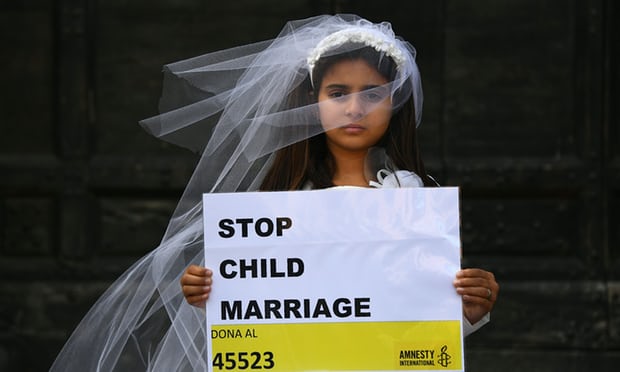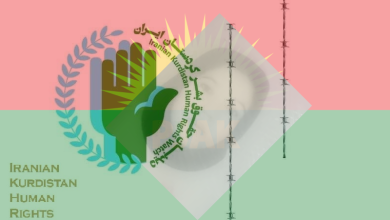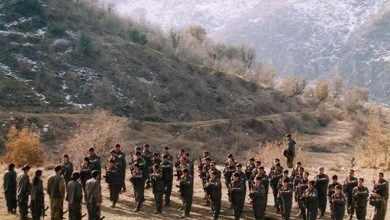While the armed PJAK group presents itself as the defender of “Kurdish women’s freedom,” a new account from a young girl from Javanrud reveals that the reality behind this slogan is nothing more than deception, pressure, and captivity. Shilan M., a girl who left home at the age of 14 to escape forced marriage, ended up in armed camps in the Asos Mountains and, years later, fled with fear and hope.
Shilan M., a young woman from the Kurdish regions of Iran, was drawn to PJAK with enticing promises as she searched for a better future and social justice. Having fled home in her teens with grand dreams and unaware of the armed groups’ hidden realities, she decided to return after enduring hardships, suffering, and witnessing the organization’s lies. Her story represents a part of the tragic fate of many Kurdish boys and girls who have fallen victim to the ideological propaganda of armed groups.
PJAK, the Iranian branch of the PKK, has spent years recruiting Kurdish youth using social networks and dazzling slogans. They target teenagers and young adults—often suffering from poverty, unemployment, or social pressures—with promises of women’s liberation, equality, and fighting oppression. However, the reality within the group is nothing but suppression, forced labor, deprivation, and total control over members’ individual lives.
Shilan M. is also a victim of this structure—a girl who went to the mountains with the hope of education and progress but encountered violence, fear, and deceit there.
Full Exclusive Interview with Shilan M.
Please tell us about yourself and your family. How was your childhood?
Answer: I’m Shilan, born on July 12, 2001, in Javanrud. Both my parents were employees. We never had any financial problems; our life was peaceful and middle-class. But the trouble started elsewhere—from the traditional mindset and closed view toward girls that existed in our society. In our family and neighborhood, there was still the belief that the sooner a girl married, the better. No one talked about a girl’s right to choose or continue her education.
I studied up to the ninth grade and always wanted to become a hairdresser or continue my studies. But from about age 13 or 14, my marriage started being discussed. One of my father’s relatives proposed to me for his son, and my family said yes without even asking for my opinion.
So, was it actually forced marriage that made you decide to leave home?
Answer: Exactly. I didn’t want to get married, but no one would listen. At the same time, my sister, Kawsar, was in a similar position; she was also forced into an engagement with an older man. Kawsar was an energetic, independent, and defiant person. She had connected on social media with a man named Sarhad, who introduced himself as an asylum activist and said he could help her go to Europe.
I was only 14 then. When I heard Kawsar was leaving, I thought we would go to Europe together, study, and be free. She didn’t want to take me, but I insisted. I even threatened to tell our parents if she left me behind. I didn’t understand the great danger ahead; I just wanted to escape that forced marriage.
How did your exit from Iran happen?
Answer: It was the night of March 15, 2016. Kawsar, my cousin Shahla, and I left illegally through the Baneh border. It was freezing, and the path was full of rocks and snow. We thought we would be in Europe within a few days, but after crossing the border, we ran into some armed individuals who said we were going to a “camp.” It was then that I realized we had been deceived and that our real destination was Asos, not Europe.
How did you feel when you realized you were joining the PKK group?
Answer: Fear and confusion. I didn’t understand where I was at all. We were three teenage girls with no experience in politics or war. I cried and begged to go back, but the armed people said, “There is no way back.” Our lives changed from that moment.
They took us to the Asos training camp. There, they told us we had to have new names. Mine was changed to “Rojin.” They took all our possessions: our phones, family photos, even our own clothes. They said we had to live like fighters and forget all attachments.
What was the training course like in Asos?
Answer: Very difficult. Military drills, ideological education, and heavy labor from morning to night. They said we were fighting for women’s freedom, but in reality, we were captives. I was just a 14-year-old child who couldn’t even carry a gun, but I was forced to learn.
In the ideology classes, they constantly talked about the “enemy,” “governments’ betrayal,” and the “role of the revolutionary woman.” But they never allowed anyone to ask questions. When I cried or missed my mother, they punished me. They said, “Tears are a sign of weakness.”
After the training, were the three of you separated according to their rules? How was that moment?
Answer: That day was one of the bitterest of my life. Kawsar and I were always together, but after two months, they said we had to be separated. Kawsar was sent to Syria because she was interested in journalism, I was taken to the Gare region in northern Iraq, and my cousin went somewhere else.
When I was separated from her, my heart broke. I felt like I had no one left. The environment in the Gare region was harsh and dangerous. We’d hear the sounds of bombings and gunfire at night. There was constant fear, bone-chilling cold, little food, and absolute loneliness.
Did you have any contact with your sister during that time?
Answer: No, never. I only occasionally heard rumors that Kawsar had fled or been injured in Syria. Every time, my heart sank; I couldn’t believe it. Until 2020, I heard she had actually managed to escape Syria and return to Iran. That moment was like hope returning to my heart. That very night, I decided I would escape, too.
When you requested to leave, how did they react?
Answer: With anger and threats. They said I was under the influence of the “enemy” and that my sister was a traitor. They arrested me and imprisoned me in a dark room for a month. They interrogated me, swore at me, and sometimes deprived me of food. They wanted to force a confession from me that I was cooperating with intelligence forces.
After that, they apparently saw no point; they released me but kept me under surveillance.
How did you manage to escape?
Answer: Two years later, in February 2023, I seized an opportunity during the night guard shift. I knew the mountain path. In dark clothes and without a light, I walked for hours in the snow. Only God knows the fear I felt that night. My feet were frozen, but I knew if I stopped, it would be over.
Near dawn, I reached a border village. A shepherd saw me and hid me until the danger passed. A few days later, I was able to get myself to the Iranian border.
After returning, how did your life continue?
Answer: Returning was difficult, but I finally managed to rebuild my life. My family hugged me and wept. None of them expected me to be alive. After a while, with their support, I got a job at a hairdressing school and now have a small salon. I got married, but this time by my own choice, not under coercion.
How do you feel today when you look back?
Answer: Sometimes, I still have nightmares. The smell of the wet soil of Gare still lingers in my mind. They used us; with the slogan of “women’s freedom,” but in reality, they turned women and teenage girls into tools of war. I was a victim of ignorance and tradition, not poverty.
What do you say to girls who might encounter similar propaganda?
Answer: I tell them: “There is no freedom in the mountains; no ‘bright future’ is hidden behind a gun. Freedom means awareness, education, work, and choice. Don’t let anyone separate you from real life with false promises. I took the wrong path so that others might stay awake.”
If you wanted to send a final message to your sister, Kawsar, what would you say?
Answer: I would just say: “You helped me find the way back, too. We both returned from a place where thousands of girls are still imprisoned. Now, we must become their voice.”
Shilan M.’s experience is similar to that of many other boys and girls who are drawn into armed groups due to extensive propaganda on social media. In these spaces, PJAK and the PKK create an appealing image of themselves using words like “gender equality” and “fighting for freedom.” However, the reality of life in the Qandil mountains involves torture, forced labor, and deprivation. Many female members in these groups face psychological pressure, threats, and even sexual violence.
The case of Shilan M. demonstrates that a lack of awareness, poverty, and educational gaps are the main factors attracting teenagers and young adults to armed groups. In this context, the role of families, the media, and cultural institutions in raising awareness is crucial. Furthermore, the international community must fulfill its responsibility regarding the abuse of children and teenagers by armed groups and take action against countries that provide sanctuary or financial and political support to these groups.
Following her bitter experience as a PJAK member, Shilan M. is now a symbol of awareness and liberation. Her story serves as a reminder that harsh realities are hidden behind beautiful and idealistic slogans. Iranian Kurdistan Human Rights Watch is publishing this account to once again emphasize the necessity of supporting victims and survivors of armed groups and confronting the deception and exploitation of young people and women.






